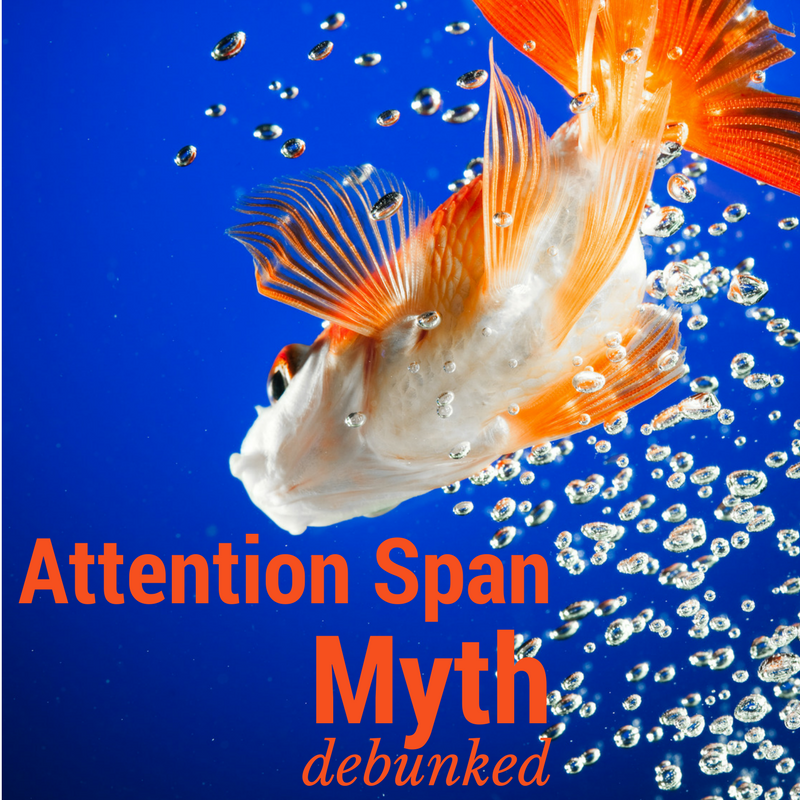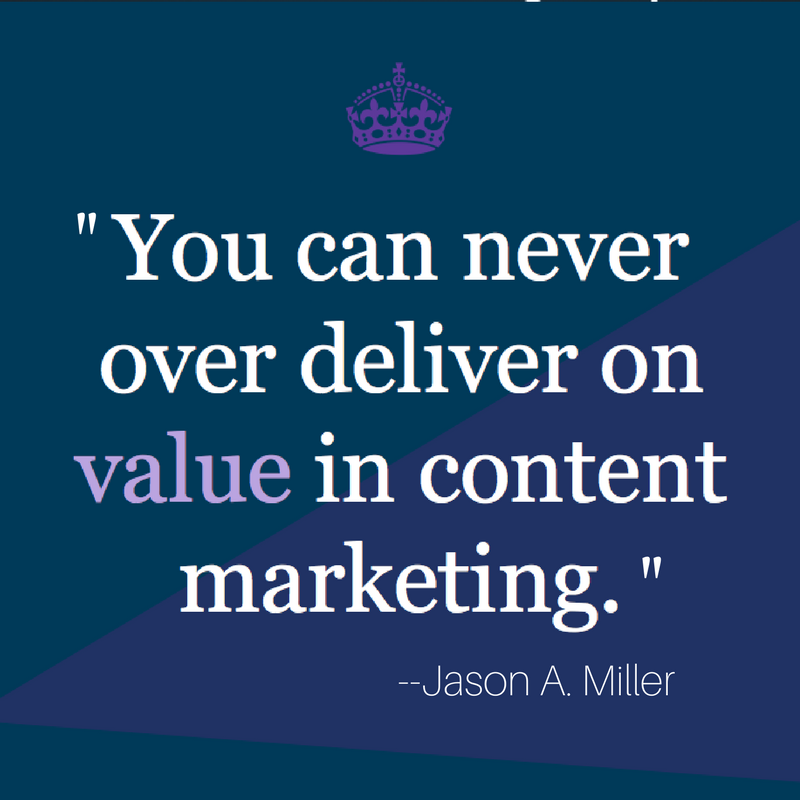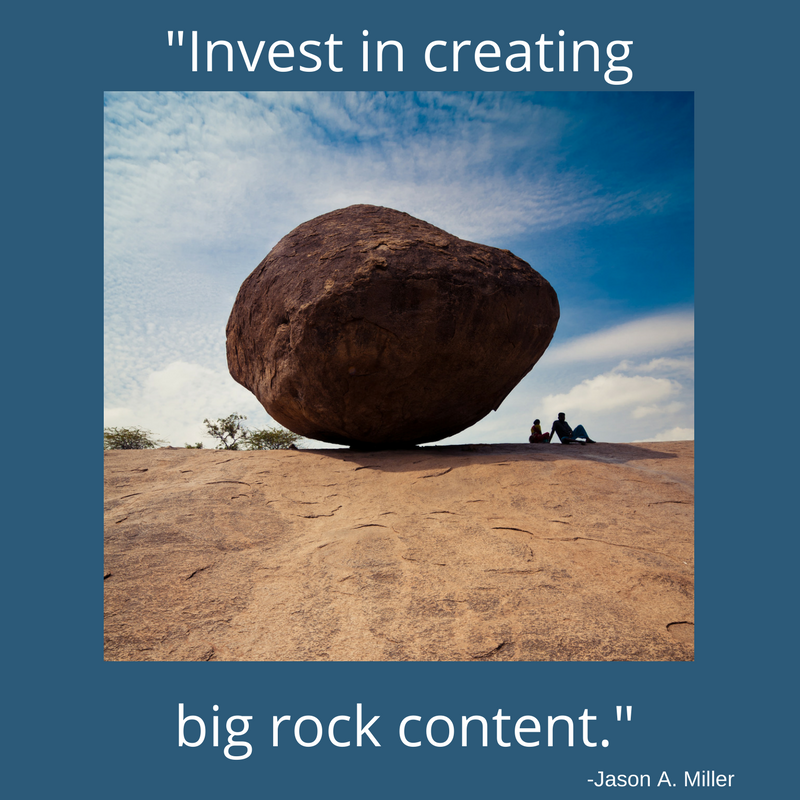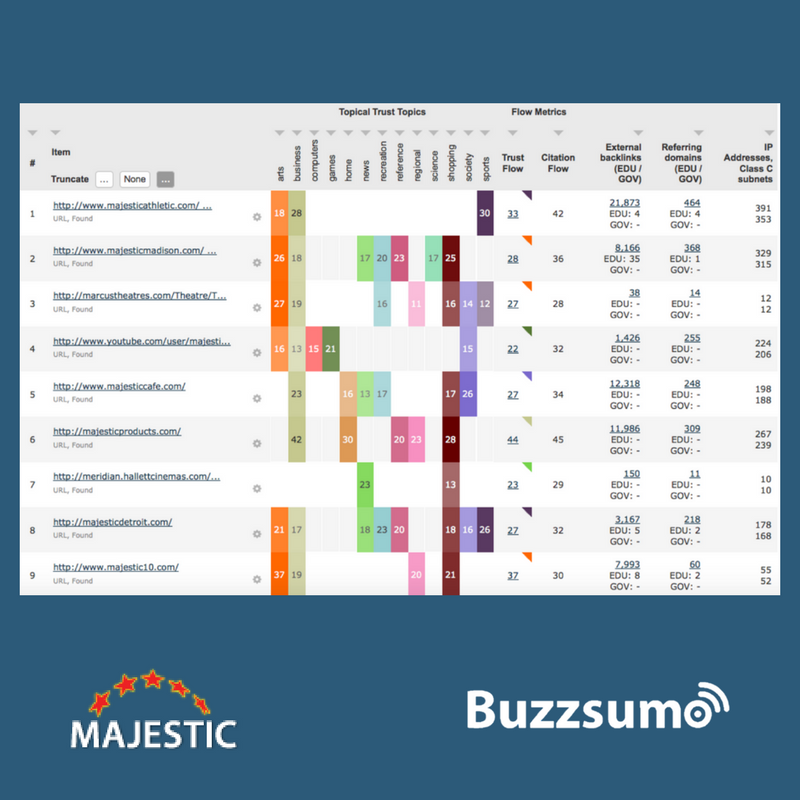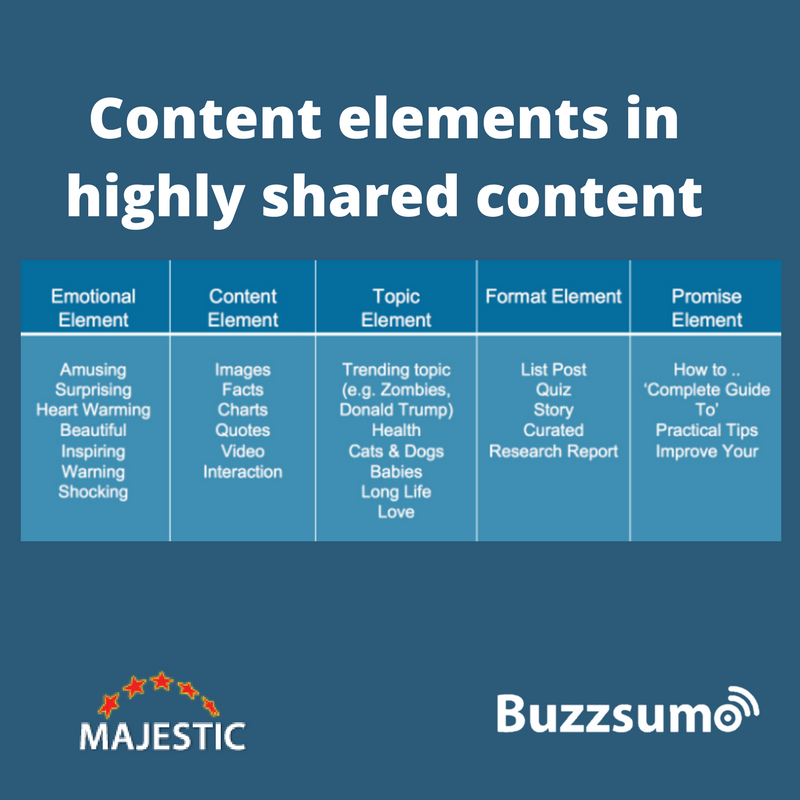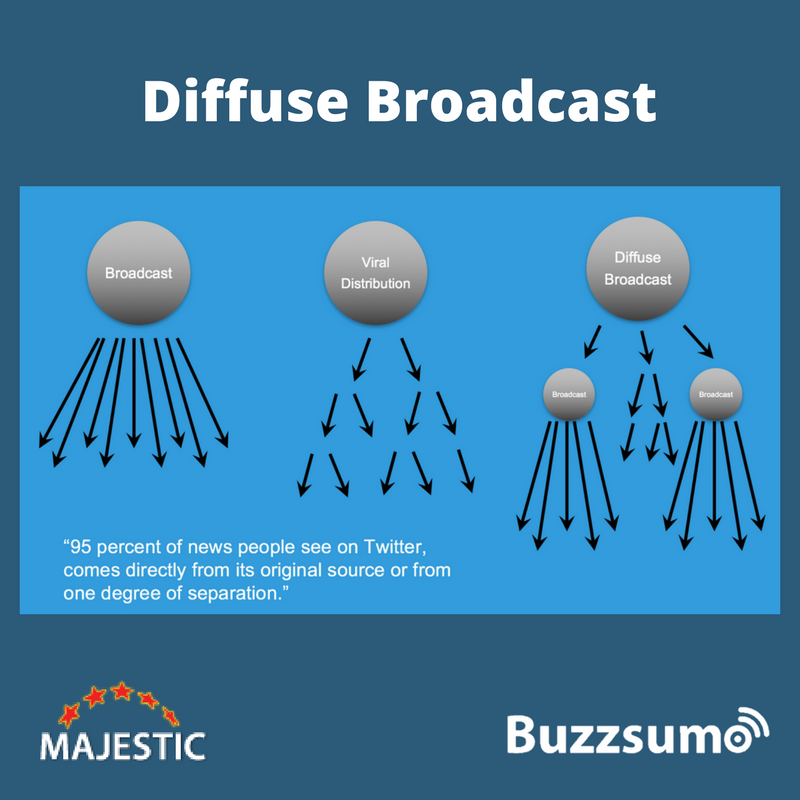We gathered some industry experts for a half-day conference in London this spring, and our tickets and waiting list spots filled so quickly that we couldn’t even really market the event.
Here’s what we learned from Jason A. Miller, global content marketing leader at LinkedIn, and Lukasz Zelezny, Growth Hacker and SEO consultant, as well asDixon Jones of Majestic.
Here are our top 10 takeaways:
(You can see our summary of each speaker’s presentation below)
- Don’t be fooled by anyone who suggest links don’t matter. These virtual handshakes are as crucial in the digital world as an introduction to an influencer is in real life.
- The “fact” that goldfish have a longer attention span than humans is a myth! (I’m relieved about this–aren’t you?)
- Building links isn’t just about keywords and alt-tags…it requires content that is authoritative, valuable and novel.
- People shift their focus from topic to topic very quickly, but they do it because they are wading through a swamp of mediocre content, looking for something worthwhile.
- RANT WARNING: Of course, it takes a lot of time, energy and commitment to uncover and thoroughly answer your customers’ questions, one-by-one, until they have all of the information they need about your product, your industry, and their success, at their fingertips, with relevant charts, graphs, and images! Of course it will cost your company money, (and if you do it right, will cost you moments of agony as you iterate headlines until you find one that would move Larry Kim to cry). BUT–that is our job, our mission, our mantra. We are artisans of the answer. Craft-beer, craft-cheese, and craft bread have all had their moment. It’s time for craft-answers to replace stale, manufactured, shrink-wrapped blog posts. RANT OVER.
- The fight for the top spot on Google is a valiant and important struggle: There is a huge difference in the click through rate for posts that rank in the first position on Google and those that rank second. But, the CTR for posts in the fifth through tenth positions are not substantially different.
- Teams that share each others content are happier, more resilient and have better office parties. Not really, but they do have incredible reach: “A single employee sharing 3 pieces of content a day can add up to 23 million in additional reach in a year.” Jason A. Miller
- Data shows that people are both afraid of and drawn to new things. This explains Jason Bourne, Finding Dory, and possibly, the entire super-hero genre.
- Data shows that truly viral content is a myth. Instead, content with high shares is broadcast diffusely, with multiple influencers sharing with their audience. The audience does not drive typically drive the same number of shares , as it would if content dissemination truly mimicked the common cold.
- Data shows that successful content marketers are tightrope walkers, giving answers for commonplace problems without losing sight of the extraordinary complexity of readers’ humanity. Our audience wants to read valuable information that meets a mundane need without boring them to tears. Given the choice, they’d like to get their answers with a side of emotion and a promise for success, in a package that they understand and like.
If we told you we were offering a second event in NEW YORK that promises to be as useful as this, and that we have worked hard to make sure that more people will be able to attend, would you want an invitation?
Of course you would!
Sign up now, seats are limited.
Now for a summary of the great presentations in London.
Jason A. Miller
Global Content Marketing Leader at LinkedIn
KEYNOTE: Innovation In Content Marketing Starts with a Reality Check
We are better than goldfish!
Quit creating content for goldfish attention spans, and write for sophisticated human content consumers, Jason says.
The often repeated “fact” that goldfish have trumped humanity in a concentration challenge has no basis in research, Jason says. A frequently referenced study of attention comparisons has been misinterpreted, leading to widespread misbelief.
The study actually points to something totally different and more significant for marketers.
While people do have the ability to move quickly from topic to topic, they do so in order to pay appropriate and significant attention to truly valuable information.
In essence, people use attention efficiently to find good things to concentrate on, Jason says. (Perhaps goldfish are still looking for something valuable enough to merit their focus?)
The bottom line: writing that is designed for an audience of unsophisticated, goldfish-like readers will fail because it will not please actual human readers who are constantly shifting their attention through mountains of content, looking for the pieces worth their time.
Long-form content that delivers value is the key to engaging an audience.
Studies by Contently, MarTech, BuzzSumo, and Disruptive have shown that content of more than 1500 words performs far better than common 400 word blog posts.
Yes, that type of content takes more time and effort to create.
Yes, it’s worth it, Jason says.
Research indicates that content marketers haven’t been in touch with this reality. A BuzzSumo study found that most content –50 percent — gets less than eight shares, and no links.
Doing better will require marketers to produce relevant, long-form content that answers the questions prospects are asking, Jason says.
He suggest several actions steps. First, invest in creating “big rock” or cornerstone content and parcel it out in smaller slices over time.
Then, A/B test everything. Even small changes make a big difference.
A third step: Leverage the sharing power of your employees. “Only 3% of employees share content, Jason says, “Yet they generate 30% of all content engagement for a typical business.”
“A single employee sharing 3 pieces of content a day can add up to 23 million in additional reach in a year.”
Lukasz Zelezny
Head of SEO, Growth Hacker and SEO Speaker Consultant
The Unconventional Guide to Research, Optimize and Share Your Content
Snapshot Method
If you have a site with an established history of SERP ranking, and you are working on organic performance, Start your research with the Snapshot Method, Luzasz suggests. The method begins by looking at the key words your site already ranks for and asking if you can rank better.
Using a key word tool, identify the terms for which you rank between two and 10— essentially, the first page of Google.
There is a huge difference in the Click Through Rate for positions one and two on SERP’s, a smaller difference between position three and two and almost no difference between position five and 10.
You need to fight for the first position, Lukasz says.
To win the top spot, optimize your site for the words that you’ve identified during the research phase. Focus on:
- Title Tag Modification
- Strong Tags
- ALT Tags
- IMG Filenames;
- Additional paragraphs with text
- Header modification
- Internal links with keyword rich anchor texts.
In selecting a keyword tool, Lukasz recommends using as many as possible to generate the largest sample of keywords.
Gap Analysis
A second research process is Gap Analysis. “Competitors are the best source of information,” Lukasz says. Gap analysis is based on determining what your competitors are writing about.
To get started, find the keywords that your competitors are ranking for, but you aren’t. Work with your copywriters to fill the gap with content that is tailor-made to rank alongside (and ultimately, above) your competitors.
ATOM Method
The third method Lukasz described is designed to adjust your site if one of your URL’s is ranking for too many keywords. Begin by finding and exporting keywords with their corresponding URL’s, Lukasz says.
Then, choose the URL you want to optimize, and split all of the keyword phrases it ranks for into single terms. These single terms are the ATOM”s you will work with in your optimization plan. Excel’s text to column feature is great for splitting multi-word phrases into ATOMS, Lukzasz recommends.
Once you have identified the ATOMS, you can recombine them into phrases for use at the URL you are targeting.
SEO and Social together
Social sharing and SEO work together, Lukasz says. “There is no silo.” Twenty percent of your content time should be spent on writing: 80 percent on promoting or sharing on social.
Another tip: If you aren’t writing news, you should write evergreen content that will sit for a long time on the same URL, Lukasz says. In your writing, watch for and eliminate time-indicating words like “last month” or “last week.”
Answer boxes
Answer boxes are the best place to rank on Google, Lukasz says. While there is no direct formula for getting content to show as an answer box, there are a few steps that increase your chances of being displayed there.
Use your competitors to find what keywords trigger answer boxes, then create content that is written in simple language that could be understood by a machine. Use images with good alt tags, and use bulleted lists in content that targets answer box placement.
Dixon Jones
Marketing Director at Majestic
Link Building for Search Engine Visibility
Links Matter
It’s time to stop questioning the value of links, says Dixon. Backlinks matter greatly because they drive people to your site, making your content visible to a larger audience.
Not only does it make intuitive sense that backlinks are important, but, research by Stonetemple, as well as comments by Andrey Lippatsev, a senior strategist at Google, confirm that links are an important part of SERP results.
Because of their importance, it’s critical to have a strategy in place to get links.
In addition to what Dixon calls the low-hanging fruit of identifying 404 errors and pointing them toward appropriate pages on your site, consider logically linking underperforming pages of your site to higher performing pages.
Content That Attracts links
A robust link strategy should also include creating content that attracts links.
Thankfully, research has revealed common reasons that people link to content. They do so to:
- support an article
- share information that is valuable, authoritative, or new.
- share data that will produce industry change.
Thus, link-building should include publishing original research and insights about topics your audience values, Dixon says. Content that sets industry standards will attract links as people will want to refer to it, providing a link as they do. Data-driven content is very effective in generating links.
Asking how many links are needed to rank well is not the most important question, because the websites have different relative strengths, Dixons says. Majestic provides a rubric for identifying the strength of a linking site.
A few links from strong sites can be more valuable than multiple links from many sites.
Ideal Content Launch Plan
In addition to publishing the types of content that will draw links, Dixon also outlined a process for launching content. His recommendations begin long before the piece is written.
The four-step ideal launch sequence is:
- Identify & Engage with Relevent Influencers
- Prepare the post and email them a Preview
- Tell them the link url and exact time of launch
- Remind them it is live.
Steve Rayson and Susan Moeller
Data Insights Into Content Marketing
Data completes the picture
Don’t rely solely on your own intuition or experience to inform your content decisions, Susan says. With an audience as diverse as the entire worldwide web, it’s impossible for one person to adequately understand audience preferences.
Data makes it possible to grasp the types of content that resonate, filling in the gaps left by our own media consumption.
Research into millions of articles and billions of Facebook posts has allowed us to identify five core elements in content that is heavily shared.
The data shows that successful content has:
- An emotional element
- A content element
- A topic element
- A format element
- A promise element
The emotional element can be positive or negative, and it takes many forms: surprise or controversy, inspiration or heartbreak, amusement or anger.
The most popular content elements are images, facts, charts, quotes, videos or interactions.
Two topic elements consistently emerge as engagement drivers. People like to share content that is trendy, but they also like to share content about a handful of perennial favorites—puppies and babies, health and longevity, love.
Trends can be identified in culture—like the current obsession with millennials, or the less obsessive but still ubiquitous focus on sleep. In-vogue content can also be drawn from the world of entertainment—from books or movies, sports or television. Trendy topics can also be found in current events.
When deciding which formats to use, look to quizzes, list posts, research reports and stories to drive high levels of engagement.
Remeber: people don’t have an obligation to engage with our content, so make sure that each piece of content has a clear value proposition, and communicate that early on. Data shows that people like to share content that has a clear and strong promise of something valuable.
Offering success is a common and very shareable theme.
These same five elements apply to headlines that drive shares.
What Data Shows About Facebook
When it comes to maximizing engagement for your Facebook posts, data shows that the best time to post is between 10 p.m. and midnight of your audience’s local time, and the best day to post is Sunday.
Videos that are embedded directly into Facebook get far more interactions than those shared via a link to YouTube. And, posts with hashtags get fewer interactions than those without.
Research into large datasets is a great starting point for developing a posting strategy, Steve says, but follow up by tracking successes and failures to determine what your audience responds to best.
The number of published post is growing. But only a few of them get a truly large number of shares. The distribution of shares is skewed, with the vast majority of posts getting less than 8 shares. The posts that get incredibly high share volumes are true outliers.
Data shows us that our readers’ favorite topic is themselves. This is one reason why quizzes are so frequently shared.
As with building links, creating valuable content that is original, research based and authoritative is the best way to drive shares, Steve says.
It’s important to remember that people are also simultaneously drawn to and frightened by new content. Because of this, it is important to link novel ideas to more established ones. Consider updating existing content to capitalize on an audience’s love hate relationship with novelty.
Finally, keep in mind that if content were truly spread virally, we would see one person sharing with 3 people, and those people each sharing with 3 additional people. But, the reality is much more of a diffuse broadcast, with a group of people sharing content with influencers who share the content with their audiences. Those audiences do not in turn drive the same number of shares.
Content SEO 2017 is coming to New York! Register now for the May 16 event.
Categories
Marketing TrendsCategories
Marketing TrendsThe Monthly Buzz⚡
Subscribe to BuzzSumo's monthly newsletter to:
Stay up-to-date with the best of the best in content marketing 📝
Get data-informed content, tips and tidbits insights first 👩🏻💻
Read top shared content by top marketing geeks 🤓
Try
Enter any topic, term or url to search to see BuzzSumo in action. It’s free!
100% free. No credit card required.
